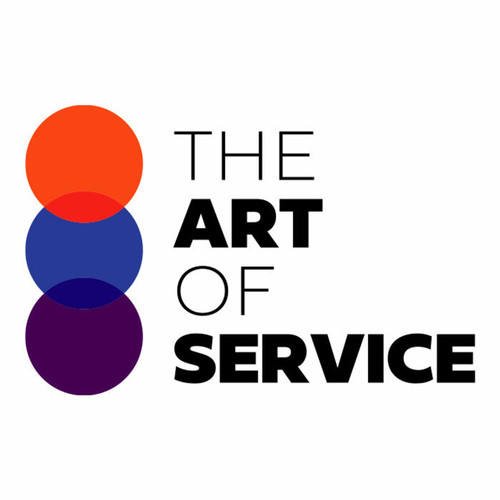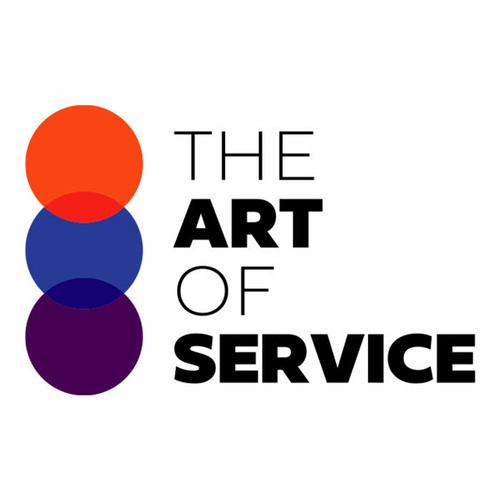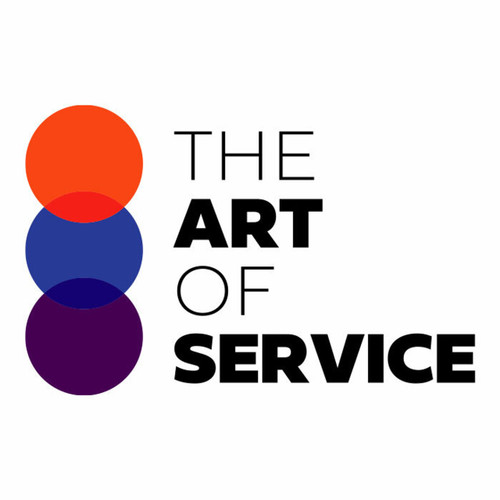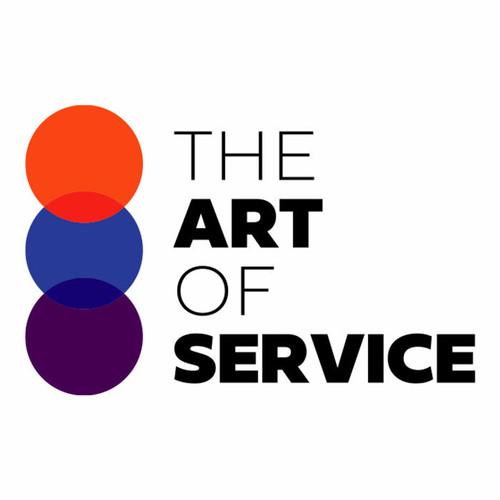Are you tired of spending hours searching for the most important questions to ask in order to get results quickly and effectively? Say goodbye to wasting time and hello to our Data Formats and High Performance Computing Knowledge Base.
Our comprehensive dataset contains 1524 prioritized requirements, solutions, benefits, results, and real-world case studies and use cases.
This valuable resource will save you time and effort by providing you with all the essential information you need in one convenient location.
But what sets our Data Formats and High Performance Computing Knowledge Base apart from competitors and alternatives? We have done extensive research to ensure that our dataset stands out as the ultimate tool for professionals like yourself.
Our product offers a cost-effective and DIY alternative to hiring expensive consultants or spending countless hours conducting your own research.
With our Data Formats and High Performance Computing Knowledge Base, you can easily identify urgent and high-priority needs, as well as the scope of your project.
This allows you to focus your efforts on the areas that matter most and achieve quicker and more accurate results.
Our dataset also provides detailed specifications and overviews, making it easy to understand and use for professionals at any level of expertise.
But the benefits don′t stop there.
Our product goes beyond just providing information.
It offers in-depth knowledge and insights into the world of data formats and high performance computing.
Whether you are a business looking to streamline your processes or a professional seeking to expand your skills, our dataset has something to offer everyone.
Don′t miss out on the opportunity to enhance your work with our Data Formats and High Performance Computing Knowledge Base.
Say goodbye to frustration and hello to efficiency and success.
Try it out now and see the difference it can make for yourself!
Discover Insights, Make Informed Decisions, and Stay Ahead of the Curve:
Key Features:
Comprehensive set of 1524 prioritized Data Formats requirements. - Extensive coverage of 120 Data Formats topic scopes.
- In-depth analysis of 120 Data Formats step-by-step solutions, benefits, BHAGs.
- Detailed examination of 120 Data Formats case studies and use cases.
- Digital download upon purchase.
- Enjoy lifetime document updates included with your purchase.
- Benefit from a fully editable and customizable Excel format.
- Trusted and utilized by over 10,000 organizations.
- Covering: Service Collaborations, Data Modeling, Data Lake, Data Types, Data Analytics, Data Aggregation, Data Versioning, Deep Learning Infrastructure, Data Compression, Faster Response Time, Quantum Computing, Cluster Management, FreeIPA, Cache Coherence, Data Center Security, Weather Prediction, Data Preparation, Data Provenance, Climate Modeling, Computer Vision, Scheduling Strategies, Distributed Computing, Message Passing, Code Performance, Job Scheduling, Parallel Computing, Performance Communication, Virtual Reality, Data Augmentation, Optimization Algorithms, Neural Networks, Data Parallelism, Batch Processing, Data Visualization, Data Privacy, Workflow Management, Grid Computing, Data Wrangling, AI Computing, Data Lineage, Code Repository, Quantum Chemistry, Data Caching, Materials Science, Enterprise Architecture Performance, Data Schema, Parallel Processing, Real Time Computing, Performance Bottlenecks, High Performance Computing, Numerical Analysis, Data Distribution, Data Streaming, Vector Processing, Clock Frequency, Cloud Computing, Data Locality, Python Parallel, Data Sharding, Graphics Rendering, Data Recovery, Data Security, Systems Architecture, Data Pipelining, High Level Languages, Data Decomposition, Data Quality, Performance Management, leadership scalability, Memory Hierarchy, Data Formats, Caching Strategies, Data Auditing, Data Extrapolation, User Resistance, Data Replication, Data Partitioning, Software Applications, Cost Analysis Tool, System Performance Analysis, Lease Administration, Hybrid Cloud Computing, Data Prefetching, Peak Demand, Fluid Dynamics, High Performance, Risk Analysis, Data Archiving, Network Latency, Data Governance, Task Parallelism, Data Encryption, Edge Computing, Framework Resources, High Performance Work Teams, Fog Computing, Data Intensive Computing, Computational Fluid Dynamics, Data Interpolation, High Speed Computing, Scientific Computing, Data Integration, Data Sampling, Data Exploration, Hackathon, Data Mining, Deep Learning, Quantum AI, Hybrid Computing, Augmented Reality, Increasing Productivity, Engineering Simulation, Data Warehousing, Data Fusion, Data Persistence, Video Processing, Image Processing, Data Federation, OpenShift Container, Load Balancing
Data Formats Assessment Dataset - Utilization, Solutions, Advantages, BHAG (Big Hairy Audacious Goal):
Data Formats
To get data into distributed cloud storage formats, you can use data integration tools, ETL processes, or direct API uploads. These methods enable conversion and loading of data into formats like Parquet, Avro, or ORC.
Solution 1: Use data ingestion tools like Apache Nifi or DataBricks.
Benefit: Streamlines data transfer, supports real-time data processing.
Solution 2: Convert data into HDF (Hadoop Distributed File System) or S3 (Simple Storage Service) formats.
Benefit: Enables parallel processing and distribution across clouds.
Solution 3: Utilize data integration tools like Talend or Informatica.
Benefit: Simplifies data format transformation, supports multiple data formats.
Solution 4: Implement data lake architectures for centralized storage.
Benefit: Improves data accessibility, enhances data analysis capabilities.
CONTROL QUESTION: How will you get the data into distributed cloud storage formats?
Big Hairy Audacious Goal (BHAG) for 10 years from now: A big hairy audacious goal for data formats in 10 years could be to have a seamless and standardized method for transforming, storing, and accessing data in distributed cloud storage formats. This would involve creating a widely-adopted set of data formats and protocols for data migration, as well as tools for automating the process of converting data into these standardized formats.
To achieve this goal, several steps would need to be taken:
1. Research and develop a set of data formats that address the needs of different industries and use cases, taking into account factors such as scalability, interoperability, and security.
2. Create a set of open standards for these data formats, and work with industry leaders and regulators to gain wide-spread adoption.
3. Develop a set of tools and services for automating the process of converting, storing, and accessing data in these standardized formats, including data migration tools and APIs for integrating with existing systems.
4. Create a community of developers, data scientists, and data engineers to drive the development and adoption of these data formats and tools.
5. Provide education and training resources to help businesses and organizations transition to these new data formats and storage methods.
6. Provide support and maintenance for these data formats and tools over time to ensure they continue to meet the evolving needs of users.
It would be a significant undertaking, but it would have the potential to revolutionize the way data is stored, accessed, and shared, making it easier for organizations to harness the power of their data and drive innovation.
Customer Testimonials:
"This dataset is like a magic box of knowledge. It`s full of surprises and I`m always discovering new ways to use it."
"I can`t express how pleased I am with this dataset. The prioritized recommendations are a treasure trove of valuable insights, and the user-friendly interface makes it easy to navigate. Highly recommended!"
"This dataset is a game-changer for personalized learning. Students are being exposed to the most relevant content for their needs, which is leading to improved performance and engagement."
Data Formats Case Study/Use Case example - How to use:
Case Study: Data Formats and Distributed Cloud Storage for a Growing E-commerce CompanySynopsis:
The client is a rapidly growing e-commerce company that is facing challenges with storing and managing its increasing data volumes. The company currently uses a traditional on-premises data storage solution, which is becoming increasingly expensive and difficult to scale. To address these challenges, the company is considering transitioning to a distributed cloud storage solution. The goal of this case study is to outline a consulting engagement that will help the company determine the best approach for getting its data into distributed cloud storage formats.
Consulting Methodology:
The consulting engagement will follow a four-phase approach:
1. Assessment: In this phase, the consultant will conduct a thorough assessment of the client′s current data storage and management practices. This will include a review of the client′s data types, volumes, and usage patterns, as well as an analysis of the client′s current data storage infrastructure and costs.
2. Strategy Development: Based on the findings from the assessment phase, the consultant will develop a strategy for transitioning the client′s data to a distributed cloud storage solution. This will include recommendations on the best data formats for distributed storage, as well as a detailed plan for migrating the client′s data to the new storage solution.
3. Implementation: The consultant will work with the client to implement the recommended data migration plan. This will include configuring and deploying the new distributed cloud storage solution, as well as testing and validation to ensure that the data has been successfully migrated.
4. Monitoring and Optimization: After the implementation, the consultant will continue to work with the client to monitor and optimize the new data storage solution. This will include regular performance reviews and adjustments to ensure that the solution is meeting the client′s needs and expectations.
Deliverables:
The consulting engagement will deliver the following:
1. A comprehensive assessment report of the client′s current data storage and management practices.
2. A detailed strategy for transitioning the client′s data to a distributed cloud storage solution, including recommended data formats and a migration plan.
3. Assistance with the implementation of the recommended data migration plan.
4. Ongoing monitoring and optimization of the new data storage solution.
Implementation Challenges:
Some of the potential implementation challenges that the client may face include:
* Data migration complexities: Migrating large volumes of data from an on-premises storage solution to a distributed cloud storage solution can be a complex and time-consuming process.
* Data format compatibility: The client may need to convert its data to different formats in order to take advantage of the benefits of distributed cloud storage.
* Security and compliance: Ensuring the security and compliance of data in a distributed cloud storage solution can be more challenging than in an on-premises solution.
KPIs:
The following key performance indicators (KPIs) will be used to measure the success of the data migration and the new distributed cloud storage solution:
1. Data migration time: The time it takes to migrate the client′s data to the new storage solution.
2. Data migration accuracy: The percentage of data that is successfully migrated with no errors or data loss.
3. Storage costs: The cost of the new distributed cloud storage solution compared to the current on-premises solution.
4. Storage performance: The performance of the new distributed cloud storage solution in terms of data access and retrieval times.
5. Security and compliance: The ability to ensure the security and compliance of data in the new distributed cloud storage solution.
Management Considerations:
In addition to the KPIs, other management considerations for the client include:
* Training: Ensuring that the client′s personnel are trained and comfortable using the new distributed cloud storage solution.
* Support: Establishing a support structure for the new distributed cloud storage solution, including a plan for addressing any issues that may arise.
* Scalability: Ensuring that the new distributed cloud storage solution can scale to meet the client′s future data storage needs.
Conclusion:
Transitioning to a distributed cloud storage solution can provide significant benefits for a growing e-commerce company, including cost savings, scalability, and improved data management. However, it is crucial that the data migration is carefully planned and executed to ensure a smooth transition. By following a proven consulting methodology and focusing on key performance indicators, a company can successfully transition to a distributed cloud storage solution and reap the benefits it offers.
Citations:
* Cloud Storage for Big Data: What You Need to Know. Forbes, Forbes Media, 23 Jan. 2019, u003chttps://www.forbes.com/sites/forbestechcouncil/2019/01/23/cloud-storage-for-big-data-what-you-need-to-know/?sh=774a6a6a6f3cu003e.
* Data Management for a Cloud-First World. Deloitte Insights, Deloitte, 2020, u003chttps://www2.deloitte.com/us/en/insights/topics/technology/cloud/cloud-data-management.htmlu003e.
* The State of Cloud Storage: 2021 Research Report. Cloudwards, Cloudwards, 2021, u003chttps://www.cloudwards.net/state-of-cloud-storage-2021/u003e.
Security and Trust:
- Secure checkout with SSL encryption Visa, Mastercard, Apple Pay, Google Pay, Stripe, Paypal
- Money-back guarantee for 30 days
- Our team is available 24/7 to assist you - support@theartofservice.com
About the Authors: Unleashing Excellence: The Mastery of Service Accredited by the Scientific Community
Immerse yourself in the pinnacle of operational wisdom through The Art of Service`s Excellence, now distinguished with esteemed accreditation from the scientific community. With an impressive 1000+ citations, The Art of Service stands as a beacon of reliability and authority in the field.Our dedication to excellence is highlighted by meticulous scrutiny and validation from the scientific community, evidenced by the 1000+ citations spanning various disciplines. Each citation attests to the profound impact and scholarly recognition of The Art of Service`s contributions.
Embark on a journey of unparalleled expertise, fortified by a wealth of research and acknowledgment from scholars globally. Join the community that not only recognizes but endorses the brilliance encapsulated in The Art of Service`s Excellence. Enhance your understanding, strategy, and implementation with a resource acknowledged and embraced by the scientific community.
Embrace excellence. Embrace The Art of Service.
Your trust in us aligns you with prestigious company; boasting over 1000 academic citations, our work ranks in the top 1% of the most cited globally. Explore our scholarly contributions at: https://scholar.google.com/scholar?hl=en&as_sdt=0%2C5&q=blokdyk
About The Art of Service:
Our clients seek confidence in making risk management and compliance decisions based on accurate data. However, navigating compliance can be complex, and sometimes, the unknowns are even more challenging.
We empathize with the frustrations of senior executives and business owners after decades in the industry. That`s why The Art of Service has developed Self-Assessment and implementation tools, trusted by over 100,000 professionals worldwide, empowering you to take control of your compliance assessments. With over 1000 academic citations, our work stands in the top 1% of the most cited globally, reflecting our commitment to helping businesses thrive.
Founders:
Gerard Blokdyk
LinkedIn: https://www.linkedin.com/in/gerardblokdijk/
Ivanka Menken
LinkedIn: https://www.linkedin.com/in/ivankamenken/







